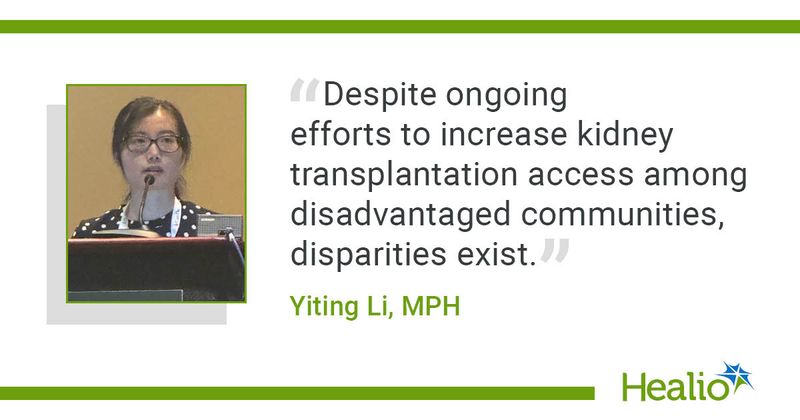Study: Black adults may have lower access to kidney transplant vs. white adults
Key takeaways:
- Black candidates for a kidney transplant were more likely to live in highly segregated areas.
- Black candidates were also more likely to live in neighborhoods with high levels of air pollution.
PHILADELPHIA — Black adults may have lower access to both deceased-donor kidney transplant and live donor kidney transplant vs. white adults, according to a speaker here.
“Despite ongoing efforts to increase kidney transplantation access among disadvantaged communities, disparities exist,” Yiting Li, MPH, a senior data analyst in the Center for Surgical and Transplant Applied Research at NYU Langone Health, said at the American Transplant Congress.

Researchers evaluated 143,914 non-Hispanic Black and non-Hispanic white patients who were candidates for transplant and first listed between 2000 and 2016, according to Scientific Registry of Transplant Recipients data. The goal, researchers said, was to find segregation and environmental factors that may impact transplant access.
Li and colleagues gathered ZIP code-level annualized particulate matter (PM2.5), a form of air pollution, and matched it to each candidate’s ZIP code and listing year. Investigators also combined social and environmental injustice levels, defined by high PM2.5 and segregation scores, to examine outcomes.
According to the findings, Black candidates were more likely to live in neighborhoods with high levels of both PM2.5 and segregation (53.2% vs. 46.8%), respectively, compared to white candidates. Patients in areas of high PM2.5 and segregation had lower access to deceased donor kidney transplants and living donor kidney transplants vs. white candidates in lower level PM2.5 and segregation areas. Black candidates in high PM2.5 and segregation areas had lower access to deceased donor kidney transplants and living donor kidney transplants vs. white candidates in neighborhoods with low PM2.5 and segregation.
“Targeted initiatives are essential to address the synergistic impact of air pollution and segregation on access to [kidney transplant] KT,” Li said. “Things that can be considered on the national level are reducing vehicle traffic, improving the built environment ... and addressing socioeconomic inequities.
“At the transplant provider and centers level, we can consider community outreach, enhancing support networks and cultural practices,” she said.

